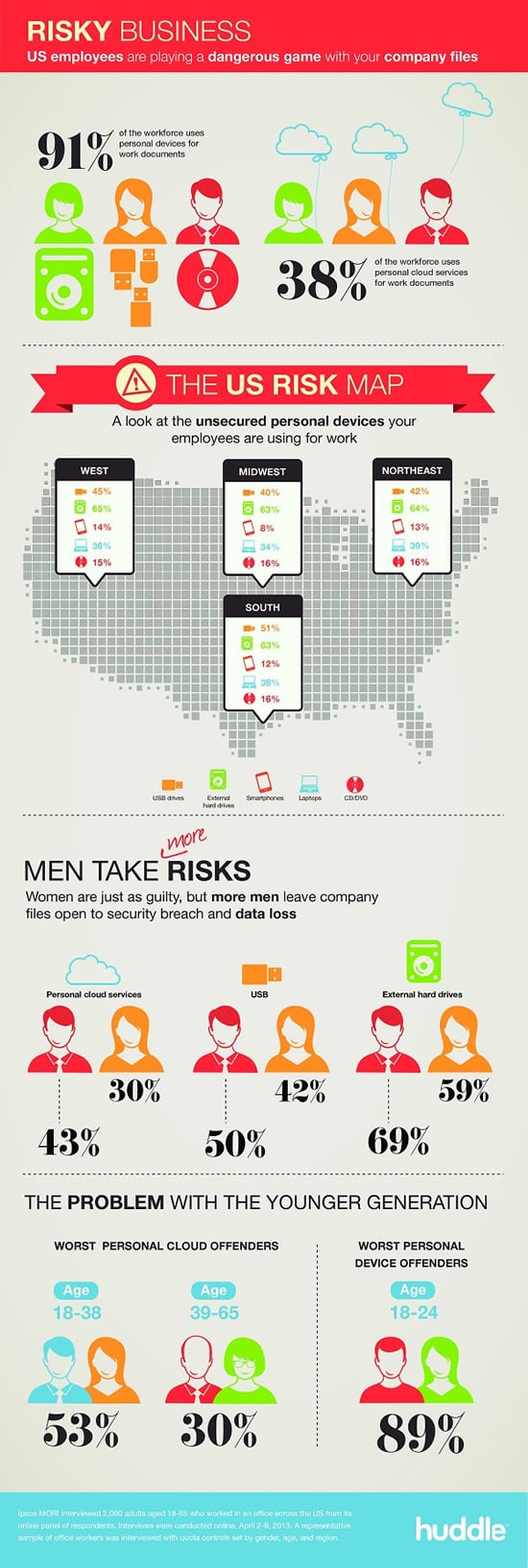Having access to information, content and data at the right time and across the right channels is key in a knowledge economy. This goes both for the information that we need for work purposes and lives inside the ecosystem of the organization, as for the content we find “out there” in the vast social and online space. Personal knowledge management becomes a reality for everyone in the digital economy, with cloud computing as a key driver.
The ‘connected workers‘ in this era of consumerization and BYOD don’t wait for the organization to take action and just like anyone else have to find ways to find, filter, store and possibly share information, using on-demand personal content collaboration and information storage platforms that become personal knowledge management tools. This leads to the rise of disconnected individual content repositories and even silos, created by the empowered worker and based on a variety of personal cloud storage tools.
The need to manage and gain ‘knowledge’ from the daily tsunami of content hitting the Web, leads to a further adoption of personal knowledge management (PKM) systems, ranging from simple (social) bookmarking platforms to content storage systems or collaboration platforms that are now affordable for anyone, depending on the platform and scope.
Mixing a centralized and decentralized content approach
In a report, ‘State of the Enterprise Information Landscape‘, enterprise content collaboration platform firm Huddle, found critical business data is increasingly being stored in separate consumer cloud services and storage devices as well. The business brain is shattered all over the place (and hard to locate) in disconnected content repositories, created by your workers. And for a reason.
With the broad adoption of tools such as Dropbox, Box.net, Google Drive, Microsoft SkyDrive, Apple’s iCloud and many more, more employees are using personal cloud storage and collaboration tools in the workplace. A staggering 38% of US respondents and even 43% of UK respondents use such tools to store work documents.
Moreover, many so-called content curation platforms enable people to not just store but also comment on and share content and information. Obviously, in the latter case it will – if all is well – concern content/information/knowledge that can be shared (content curation is one of many ‘tactics’ that are used in content marketing, often in a social context, but also a practice used by people like you and me because it just makes sense).
Add to all the mentioned evolutions the fact that early BYOD age devices such as USB drives that are often used for content storage (and interpersonal collaboration) too and the potential challenge is clear, especially regarding critical business data and information: there is a security risk when it boils down to ‘corporate’ information and personal content storage tools. It’s not a small challenge: 91% (yes, 91%) of US and UK surveyed employees store, access, share and work on enterprise documents via personal devices such as USB sticks and external hard drives.
With the BYOD phenomenon and rapid adoption of mobile devices on that, there is an increasing content fragmentation happening. In a way, this shouldn’t surprise us. Just think about mobile CRM, for instance. The boost of this market, a few years ago, was mainly driven by employee demand as well. And the – positive- impact on business was clear: mobility had a positive impact on sales enablement. Workers just want to have access to the content and data they need when and where it suits them best. And, yes, they want to share. Furthermore, the access to content is often not well organized so workers start building their own resources and personal knowledge management systems adding the content they demand and content they find online.
As said, this phenomenon can result in security problems, to name just one potential negative impact. Another challenge: accuracy of information. To solve those challenges, a collaborative content management approach, whereby employees can access what they need when they need it, is important. The role of IT and the CIO here is primarily one of enabling, educating and – along with other departments – develop a realistic strategy whereby the behavior of workers (who are increasingly social-savvy) can be combined with a better and more friendly access to information, clearly distinguishing between sensitive and non-sensitive information (and all shades of grey in-between) and including external content.
Personal knowledge management goes social and integrated: deal with it
Obviously it’s not a coincidence that Huddle, which sells solutions to solve these challenges, conducted this research. Yet, let’s face it: it confirms what in the end we all now and have to deal with. The personal and disconnected content repository issue is simply a fact and with ever more content to use and manage in our capacity as workers and individuals, we will continue to use personal knowledge management tools, increasingly with the need of sharing, collaborating and curating. And we want to be able to connect and integrate several information sources.
For organizations it’s always essential to start mapping where all the internal content sits (can you imagine how it must be spread today?) and knowing how to provide employees with the tools, ease-of-use and processes to go for a more collaborative and centralized approach, while at the same time enabling the de-centralized reality of today’s social business context. This process whereby information access is key for the knowledge worker, simply works better if it takes into account the need we increasingly have to include content and data from the Web.
And, yes, policies regarding content, BYOD and the use of social within the work context, are important too. There will never be a perfect solution to this challenge but there is one to enabling and making clear agreements whereby corporate rules and priorities meet personal responsibility, accountability and freedom. Personal knowledge management with a twist of social and collaboration perfectly fits the overall picture of a knowledge economy.


